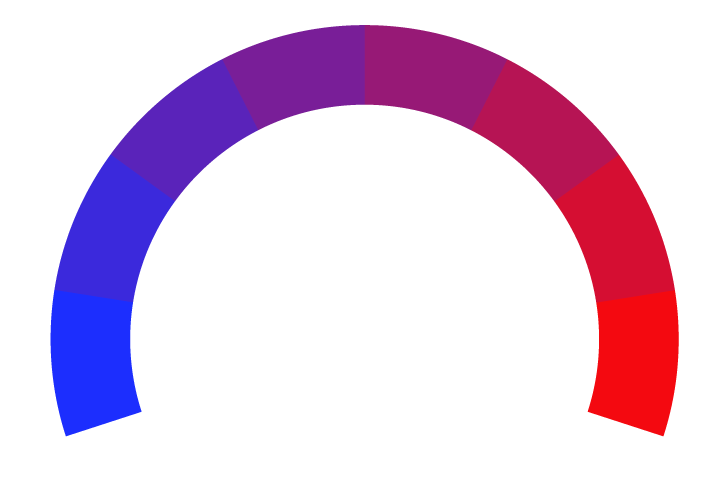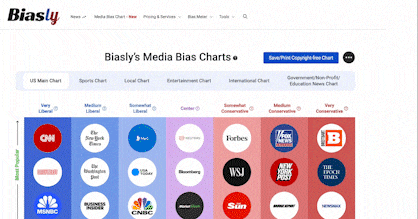Don't call it 'drone wall' -- how Europe wrangles over proposals to protect its skies
- Bias Rating
- Reliability
60% ReliableAverage
- Policy Leaning
-10% Center
- Politician Portrayal
-65% Negative
Continue For Free
Create your free account to see the in-depth bias analytics and more.
By creating an account, you agree to our Terms and Privacy Policy, and subscribe to email updates.
Bias Score Analysis
The A.I. bias rating includes policy and politician portrayal leanings based on the author’s tone found in the article using machine learning. Bias scores are on a scale of -100% to 100% with higher negative scores being more liberal and higher positive scores being more conservative, and 0% being neutral.
Sentiments
7% Positive
- Liberal
- Conservative
| Sentence | Sentiment | Bias |
|---|---|---|
Unlock this feature by upgrading to the Pro plan. | ||
Reliability Score Analysis
Policy Leaning Analysis
Politician Portrayal Analysis
Bias Meter
Extremely
Liberal
Very
Liberal
Moderately
Liberal
Somewhat Liberal
Center
Somewhat Conservative
Moderately
Conservative
Very
Conservative
Extremely
Conservative
-100%
Liberal
100%
Conservative

Contributing sentiments towards policy:
60% : "Ideally, NATO should be in charge and the EU should provide the money -- but first we need to figure out what it is that we actually want and need from all of those initiatives that actually works in the end," one EU diplomat quipped.57% : The European Commission's proposal joins a growing ecosystem of anti-drone efforts across Europe.
55% : Brussels consultants recommend shifting from the notion of a "wall" to a multi-layered European network of interoperable sensors, interceptors, and command systems -- a modular approach adaptable to urban, border, and front-line environments.
54% : EU leaders will debate the plan next week at their Brussels summit.
52% : By this week, EU officials had quietly rebranded the project as European Drone Defense Initiative, striking the original name from the draft proposal before its presentation, according to earlier versions of the document seen by the Kyiv Independent and first reported by Reuters on Tuesday.
51% : But some of the bloc's largest member states -- France, Germany, Italy, and Spain -- were not impressed, arguing the idea overlooked their own vulnerabilities, from airports to energy infrastructure.
51% : Having drone defenses is no longer optional," EU Foreign Policy Chief Kaja Kallas said after hosting a dinner with defense ministers on Oct. 15. "Our target is to have functional anti-drone defenses by the end of 2027," she added.
51% : That sentiment is shared by many NATO officials: the EU can pay, but defense remains NATO's job.
50% : Earlier this week, Trump had again repeated Spain should "be punished" over its opposition to raising defense spending, adding that he had considered levying tariffs on its products.
48% : Without broad support from capitals, the European Commission may also struggle to tap into major EU funding streams, though national budgets and the EU's €150 billion ($175 billion) SAFE loans scheme could still offer partial financing.
47% : " "Part of the problem is also about giving up member state competences to the European Commission at the expense of the biggest member states -- an enduring issue for EU defense initiatives," Giuseppe Spatafora, a research analyst at the European Union Institute for Security Studies (EUISS), told the Kyiv Independent.
46% : Defense Commissioner Andrius Kubilius, who is leading the file, had to "juggle words" at a Brussels defense conference this week, as one EU diplomat put it, which reflected both the rebranding and the political balancing act behind it.
42% : EU officials remain guarded about how much it will cost in the end and how fast it can be made fully operational.
37% : European Commission President Ursula von der Leyen first floated the "drone wall" idea in September, echoing calls from eastern EU countries to create a defensive barrier stretching from the Baltic to the Black Sea.
*Our bias meter rating uses data science including sentiment analysis, machine learning and our proprietary algorithm for determining biases in news articles. Bias scores are on a scale of -100% to 100% with higher negative scores being more liberal and higher positive scores being more conservative, and 0% being neutral. The rating is an independent analysis and is not affiliated nor sponsored by the news source or any other organization.






















